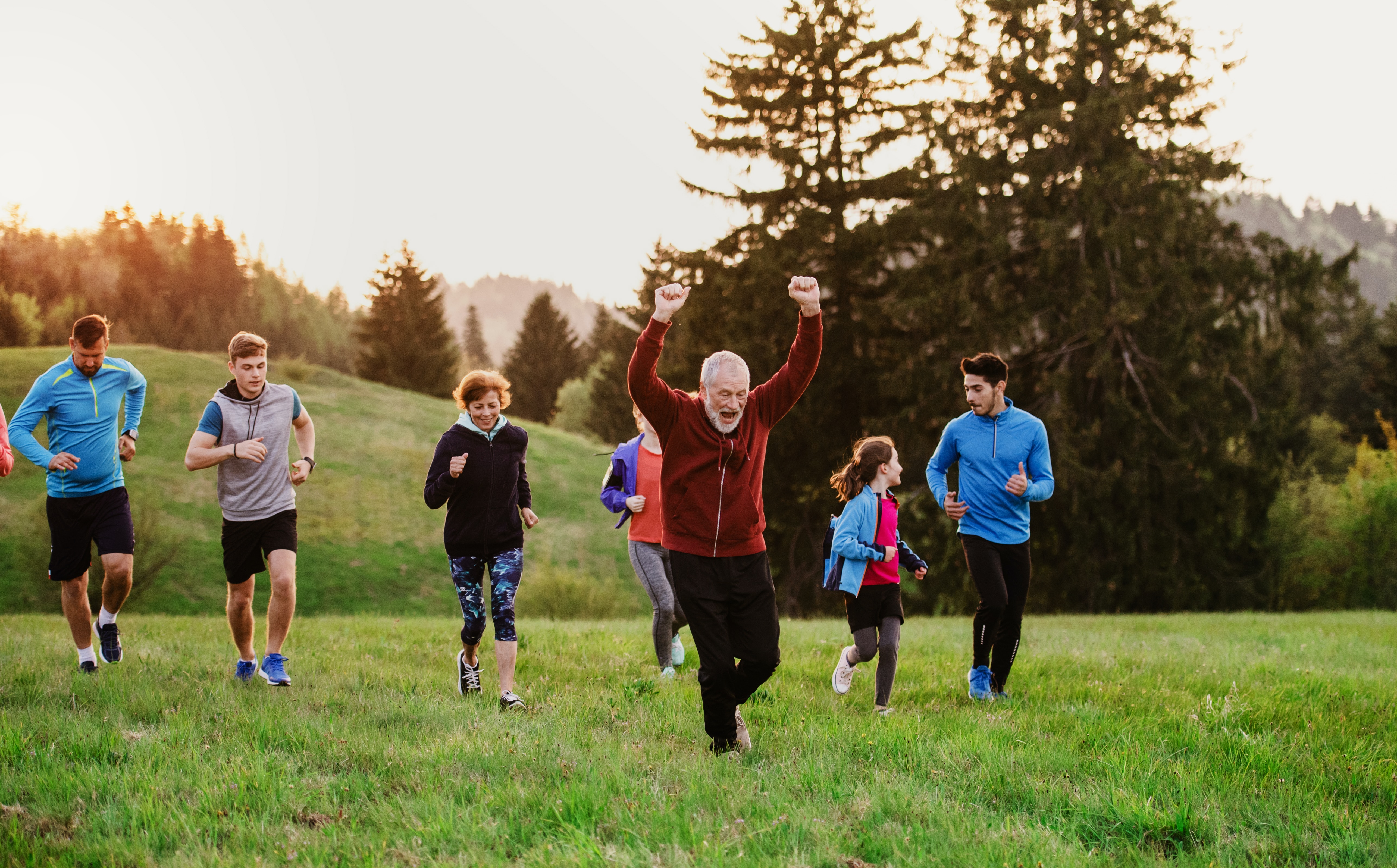How much exercise do you need?
How much do you exercise in your daily life? We actually have many opportunities to exercise on a day-to-day basis: taking something to the post office, running to the bus stop or planning a workout on a free afternoon. Although most of the benefits of exercise are well known, on average we don’t take enough of it, and spend too much time sitting down instead. Reducing our sedentary behaviour is at least as important as incorporating exercise into our daily lives. But actually, do you know how much exercise you need for your health to benefit? We have some good news for you: the new national exercise recommendations have arrived! Have you heard of them? HEPA (health-enhancing physical activity) gives evidence-based exercise recommendations for all ages, covering frequency, duration and intensity, so you can can achieve the health benefits. In this article we will tell you everything you need to know and summarise the most important facts.
Every movement counts!
The main message in the Swiss exercise recommendations aims to communicate that every tiny little step away from only a little exercise, indeed, away from long-term sedentary habits, is important and good for your health. This means that any exercise is better than none, and more is better still. Whether you exercise in your free time, or it’s something you do around the house (housework, garden) or as a mobile activity (cycling, e-biking, walking), exercise can easily be incorporated into your daily life in various ways. You will certainly come up with other opportunities when you think about your daily routine.
Important: it’s never too late to start! Even older people who have been less active up to now can still improve their health, wellbeing and performance by exercising regularly. The reverse, however, is not the case: former endurance athletes who have become inactive in the meantime will no longer benefit from their previous activities. As you can see, all of this is very much in favour of maintaining good exercise habits throughout life. Specifically regarding muscle and bone health, things are a little different: if this was neglected during childhood, it can only partially be made up for in old age. Strength training in childhood contributes to developing muscle strength and to building healthy bones. In adulthood and old age, strength training primarily contributes to maintaining strength and slowing the natural decrease in muscle mass and bone density. This ageing process begins when you reach the age of approximately 30. Yes, you read that right: strictly speaking, our bodies start to age at as young as 30! But don’t worry, this natural process occurs slowly and not overnight.
Recommendations for target groups
But that’s enough about ageing. Let’s get specific! Based on WHO recommendations and evidence-based data, HEPA has recently collaborated with other stakeholders to update the national exercise recommendations. There are specific recommendations for healthy exercise targeted at every age group. For example, children have different exercise needs from older adults, which makes sense, don’t you think? Below we provide you with a more detailed overview of the “adult” target group and beneath that you can find links to all the other target groups.
Adults
For the best possible health benefits, you need at least 150 to 300 minutes of medium-intensity endurance exercise (e.g., walking, cycling, housework etc.), or at least 75 to 150 minutes of high-intensity exercise, per week. ‘High intensity’ here means, for example, jogging, swimming, cross-country skiing or zumba. And of course you can combine medium- and high-intensity exercise. This does not mean that, if you exercise or train for over 300 or 150 minutes respectively, there are no further health benefits. Additional exercise will have additional benefits, although they will no longer be so large.
Moreover, you should also include strength training: medium- or high-intensity muscle-building exercise twice per week. Your motto here is: mix it up! Varied exercise will boost balance and flexibility as well as being good for strength and endurance. What’s more, this sort of variety is very easy to incorporate into your daily routine. You could cycle to the station, or directly to work, you could go to a fitness class in your lunchbreak, and take the stairs rather than the lift or escalator on your way home. Now, that sounds do-able, doesn’t it? And it remains true that it’s important to limit how much you sit, and to stand up frequently if you can’t.
This will help you to keep going:
- Set yourself targets: be aware of why you exercise. The more precise the better!
- Prepare: lay out your sports kit in the evening before you go jogging the following morning.
- Plan: when do you want to do what sport, at what time and where? Include back-up options: what will you do if the weather’s bad?
- Meet friends: sport and exercise can bring people together, and sometimes it’s simply more fun doing things in pairs or groups. This could give you additional motivation.
- Start small: beginnings are always hard, so start with baby steps. Your first jog does not need to be 10km!
- Be mindful: keep your eyes open during your day-to-day life and you will find many opportunities to exercise that you have maybe never noticed before (e.g., taking the stairs instead of the escalator or lift, a fitness trail in the forest, cycle paths etc.).
- Reward yourself: did you know that your body releases happiness hormones when you exercise? To be more precise, it releases dopamine, serotonin and endorphins. You can also treat yourself to something after doing some sport. What about a massage?
And incidentally, you can find these tips and a great many exercises – for the office or your free time – in this booklet (in German).
Other target groups
- Exercise recommendations for older adults
- Exercise recommendations for children and young people
- Exercise recommendations for children (under the age of 5)
- Exercise recommendations for pregnancy
- Being physically active with a baby
Booklets with tips for more exercise
References
Bundesamt für Sport BASPO (Federal Office of Sport), Bundesamt für Gesundheit BAG (Federal Office of Public Health), Gesundheitsförderung Schweiz (Health Promotion Switzerland), Beratungsstelle für Unfallverhütung BFU (Swiss Council for Accident Prevention), Netzwerk Gesundheit und Bewegung Schweiz hepa (Swiss Health and Exercise Network HEPA). (2022). Bewegungsempfehlungen Schweiz. Grundlagen. BASPO.
 subscribe to newsletter
subscribe to newsletter


